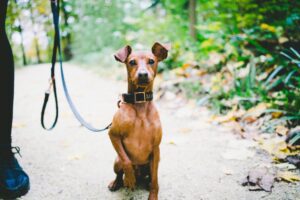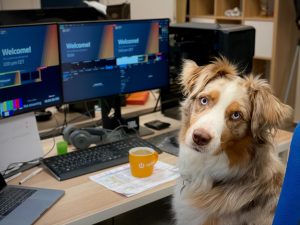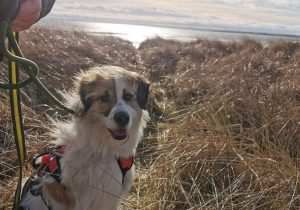Get an awesome recall. Join my 30 day, step by step program now...
Fears, Phobias and Anxiety
Whilst fear, phobia and anxiety might present with similar symptoms, there are distinct differences. Determining what you are dealing with is the first step in the rehabilitation process.
What’s the difference?
We’ll start with fear as it is probably the easiest and most common form of anxious behavior. Fear is a rational and emotional response to an actual threat or danger. For example, a dog that has been scratched by a cat will learn to be afraid of the pain that cat caused him and will behave fearfully next time he finds himself in the same situation! In any the case, the fear is real and, like all types of anxious behavior, is there to prevent future pain or even death.
We are all familiar with phobias. Most of us probably know someone, or maybe it’s you, that is living with one such as agoraphobia (fear of open/public spaces) or acrophobia (fear of heights). The term phobia describes an irrational fear that has no specific cause or basis. Dogs can experience phobias just like people can, for example a fear of shadows, Sciophobia, which is not uncommon in dogs. Zuigerphobia is also a familiar phobia in dogs, more commonly known as the fear of vacuum cleaners.
Zuigerphobia is a very common phobia in dogs, more commonly known as the fear of vacuum cleaners!
Anxiety is different to fear and phobia in that there does not need to be an actual solid reason for the fear, just the potential for it. For instance, anxiety is often seen in animals during the fireworks season. The responses to the loud bangs are actual phobic responses, but many dogs become extremely anxious before and after in anticipation of the fireworks.
Dogs can also become anxious about going for a walk, this is again in anticipation of what could happen on the walk and not a fear of the walk itself. A dog that is anxious of the walk may be responding to a bad experience that has happened on a walk once, such as being attacked by another dog, or a loud noise from a car or lorry. This dog will know your routine and behavior well and will start behaving fearfully as soon as he thinks you might take him for a walk, which could be ascertained just by the way you get out your chair, or even the shoes you have chosen to change into.
How can I help you with your dogs behaviour training?
Private Dog Behaviour Consultations are currently available online and in-person in Dundee and the surrounding area. If you are looking for help solving your dogs behaviour and training problems, please get in touch!
What causes anxious behaviour?
As a young dog, problems relating to fear can come from a few different places. For some, it starts as a general lack of confidence or a personality trait. In these cases, training will be ongoing throughout the dogs life. They will need constant reassurance and they may never be the most outgoing pup in the park, but they can learn to cope in normal social situations, as long as they have you by their side.
Inadequate socialization will have a big impact too, especially during the critical period. The critical period is an extremely important stage in a puppies life. Between the ages of 4-14 weeks of age a pup is at his most receptive to new experiences. He is fearless and will want to interact with everything and everyone he comes across. In doing so, he will learn to accept everything he has a positive experience with as normal and nothing to worry about. After this period, he can still learn to accept new things as non-threatening, but this ability is fading with his age.
For a young pup, leaving his mum and litter-mates too soon can have a big impact on his ability to cope too. It is recommended that puppies stay with their birth family until they are at least eight weeks of age. If they leave any sooner, they run the risk of missing out on important interaction with their litter mates and mother. This in turn will affect their ability to interact appropriately with other dogs as an adult.
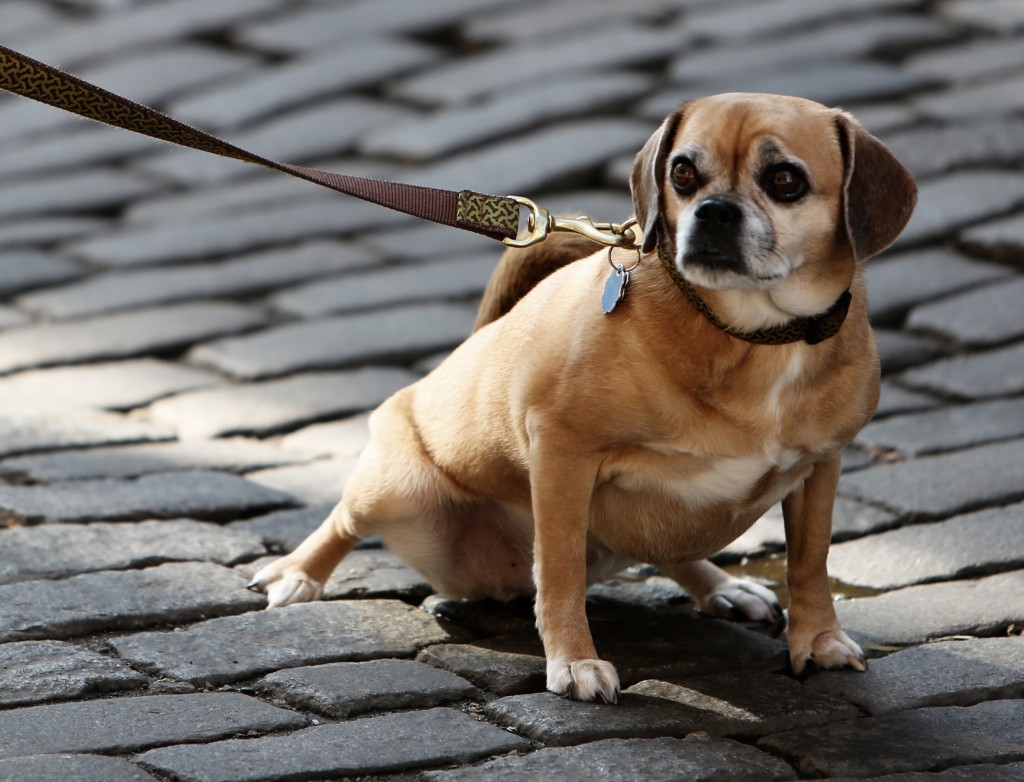
As dogs get older, life experiences become more important and are the biggest cause of fear related problems. Frightening experiences, pain, illness and abandonment are the biggest contributors. These types of fears are common and are thankfully the easiest to overcome too. They have been learned and with time, effort and patience, they can become unlearned, provided future similar experiences are positive for the dog.
How to tell if you have an anxious dog
On their own, most signs of anxiety could be easily mistaken for something else, so it is important to view these behaviors in context and look for a range of signs so as to be 100% sure. For example, a barking dog could be anxious, excited or just plain demanding, but a barking dog with his tail between his legs, his ears down and his lips pulled back is definitely nervous.
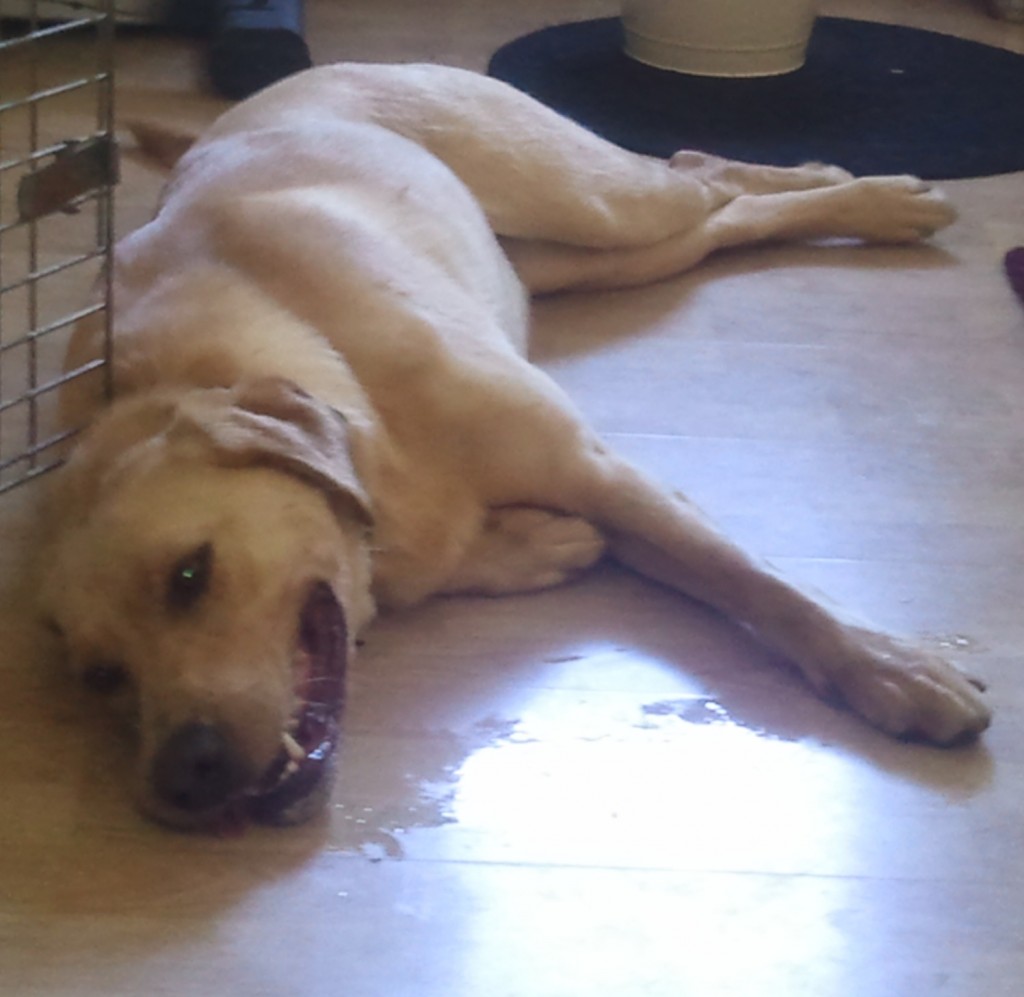
Lips pulled back and panting, both typical signs of stress
Panting, staring, pacing and trembling are fearful behaviors that should never be ignored. A frightened dog acting like this could quickly become unpredictable and possibly dangerous. Other signs of fear to watch for include avoidance behaviors such as hiding or escaping, self-harming, loss of bowel and bladder control, licking or chewing at objects, howling, and aggressive behaviors including snapping, growling and biting.
You can sum up these types of behaviors into two groups – those seeking to avoid trouble, and those that are seeking to scare it away. You can tell a lot about your dogs personality by which group he chooses in a frightening situation!
Now we have figured out what kind of problem the dog has, it is time for the crucial bit; how to help him.
Helping a fearful dog
We’ll start with a fearful dog; we already know that this dogs anxiety has come from an actual threat, so before all else we will have to figure out what the threat is. For most dogs it will be pretty obvious. It’ll be the person or object that the dog is directing his behavior towards, or trying to avoid. Then we just have to decide whether the fear is useful or not. For example, a dog that shows a fear of snakes should be not be discouraged, this fear may save his life, and possibly yours, as would a fear of cars. However, useful fear should be managed carefully so that a dog is able to walk calmly along a footpath, but retain enough apprehension that he does not run in front of the cars.
Let’s talk about a fear that is not particularly useful, such as a fear of other dogs. This fear has most likely come from inadequate socialization or a bad experience. In any case, the solution will be to gradually re-introduce the dog to others in a gentle and controlled way.
Initially, the trick is to establish a distance from other dogs that is close enough to trigger a mild fear response but far enough away that the dog can still respond to well-known commands, such as the Sit command. Now work at this distance for as long as it takes for the fear response to subside. You could do some basic training, heel walking, or play with a toy, whatever it takes to distract and refocus your dogs attention.
As he starts to relax, the next step is to move a little closer and repeat the whole process. Keep going until you are close enough to be able to introduce him to a calm dog. It might be useful to know that depending on how bad the fear is, this process could take anything from a couple of hours to many weeks! As long as you are making progress, keep going!
If the fear is noise based, you can do a similar thing with a noise CD. Simply turn the volume down so that it is barely audible at first and play the CD over and over again. Over time, gradually increase the volume in the same way you would have moved closer to the dog. Just make sure your dog is coping well as you increase the volume, and don’t be afraid to go back a step if you think he is starting to stress too much.
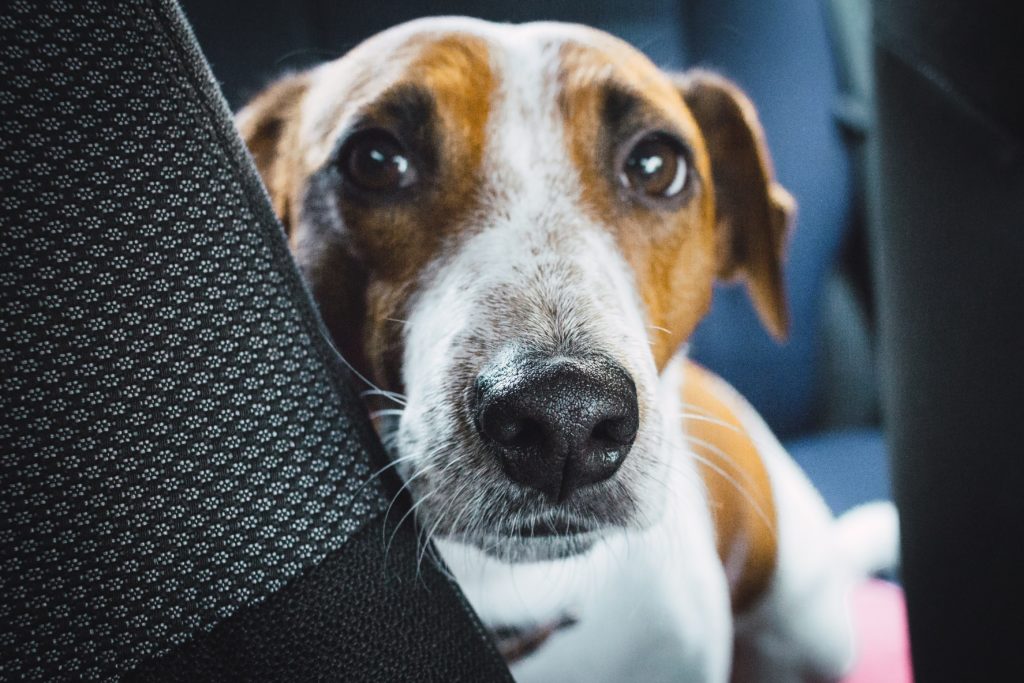
Helping a phobic dog
Phobias are a little trickier. As well as working with the source of the phobia, for example the hoover, work also needs to be done towards building a stronger than usual bond with your dog, and boosting his confidence in general. The best way to achieve both at the same time would be to take up a hobby together such as obedience training, agility or heel work to music. All are fun for you both, and are great for pooch’s mental and physical health. (There are more ideas for Bonding with your dog here)
In the example of the hoover, you should first assess how bad the phobia is. Some dogs are happy for you to push a quiet hoover around, but will worry when it is switched on. For others, just touching it will send them into a full on panic attack.
Check out my blog on managing mood for more help
Let’s assume you are working with the later. You will need a volunteer, your normal vacuum cleaner, and a long hall or room. Start with your dog on a short lead and, when you are ready, have your volunteer bring him into room you will be working in. You will already be at the far end with your hand touching the hoover. Have your volunteer distract your dog by doing some obedience work or playing with a favorite toy. As he relaxes, take your hand off the hoover and then replace it, repeat that over and over until your dog stops noticing.
Now you can make things a little harder by moving the hoover forwards and backwards. Then try moving it a little closer to him, then away. Keep going until eventually he will let you push it right past him. Continue to increase the difficulty as he makes progress. As with all things this could take hours, days or weeks. Just go at his pace. Next, we are going to do it all again, but this time with the hoover switched on!
Helping an anxious dog
The most common type of anxiety suffered by our pet dogs is separation anxiety, so lets talk about ways you can help this dog cope better. A confident dog will not fret, as long as he is not left for too long, and a tired dog will cope better too. So it stands to reason that in the first instance you should work on increasing the amount of exercise your dog is getting, as well as building confidence by joining a training class or taking up a similar activity together. The next step is about adjusting your routine slightly so your dog can cope better in your absence.
Your new routine should be calm and without drama, you want your dog to feel reassured that nothing scary is happening, so tone down any behavior that might alert him to the fact that there might be a problem or that you are about to leave.
Try this for a new routine… Ten minutes before you plan to leave, start quiet time for your dog; no attention at all, no petting, no talking and no eye contact. If you find it hard, then try to distract yourself. Now, take him to his safe place, quietly close the door behind you and only then get yourself ready to go. When you leave, do not look back or say goodbye, just go.
An enclosed space such as a utility room will can provide some comfort to an anxious dog if you don’t have a crate.
Do it backwards
When you return, do the same but in reverse. Do not rush to see him, first take off your coat and put down your keys and bags. Then when are ready, you can go to him. Continue quiet time for around ten minutes, no matter how hyper he is, just allow him time to calm himself down. You can let him out to go to the toilet if he needs to go though. Now you have mastered the routine, start small and leave him alone for a few minutes at a time at first, and gradually build up until he can be left for a couple of hours successfully.
A note about your safe place; some people like to use a dog crate, and I would be very supportive of that. Whilst to us, a crate is essentially a cage, your dog will see it as his den. It will make him feel safe, especially if you cover all but one side with a blanket. And due to the lack of space, it will stop him from pacing and panicking without you. Just take some time to introduce it carefully to your dog. If you don’t, the crate may have the opposite effect and actually cause him anxiety.
If you don’t like the idea of a crate, a small enclosed space such as a utility room will do nearly as well. Whatever you decide on, make sure your dog has access to water and a warm, comfy bed. It can also be a good idea to leave a radio on, but definitely don’t leave food. Anxious dogs do like to chew, it helps to relieve pain and makes them feel good, so it is always a good idea to offer something safe for him to chew on, but he won’t feel like eating!
Things to remember
While you are working with your dog, there are a few things that you must remember:
Your body language is very important. Make sure you are projecting confidence, stay calm, and remember to breathe slowly. You should also make sure that when he is afraid you move yourself between him and the thing that is making him afraid, this will reassure him that you want to protect him.
Remain vigilant! As your body language is important to him, so should his be to you. Make sure to never over stress your dog, if you feel things are getting out of control you must stop immediately and re-evaluate what you are doing and the pace of progression.
Remain patient. It can be a slow process to rehabilitate a dog with anxiety, it will take as long as it takes and there is no quick fix. It can help to keep a diary of your progress though. Log every detail of your training sessions, and then every few weeks, take a look back and hopefully you see more overall progress.
Use appropriate tools to maintain control of the situation and keep everyone safe. Muzzles, leads and harnesses are all good tools to use, as are panic alarms and dog crates. Why make things harder than they need to be, there are no medals for heroics when it comes to dog training.
Finally, if you are not sure, I whole heartedly recommend getting help from a qualified, experienced behaviorist. They’ll properly assess the situation and show you how to get it just right for maximum benefit.
How can I help you with your dogs behaviour training?
Private Dog Behaviour Consultations are currently available online and in-person in Dundee and the surrounding area. If you are looking for help solving your dogs behaviour and training problems, please get in touch!
How can I help you with your dogs behaviour training?
Private Dog Behaviour Consultations are currently available online and in-person in Dundee and the surrounding area. If you are looking for help solving your dogs behaviour and training problems, please get in touch!
